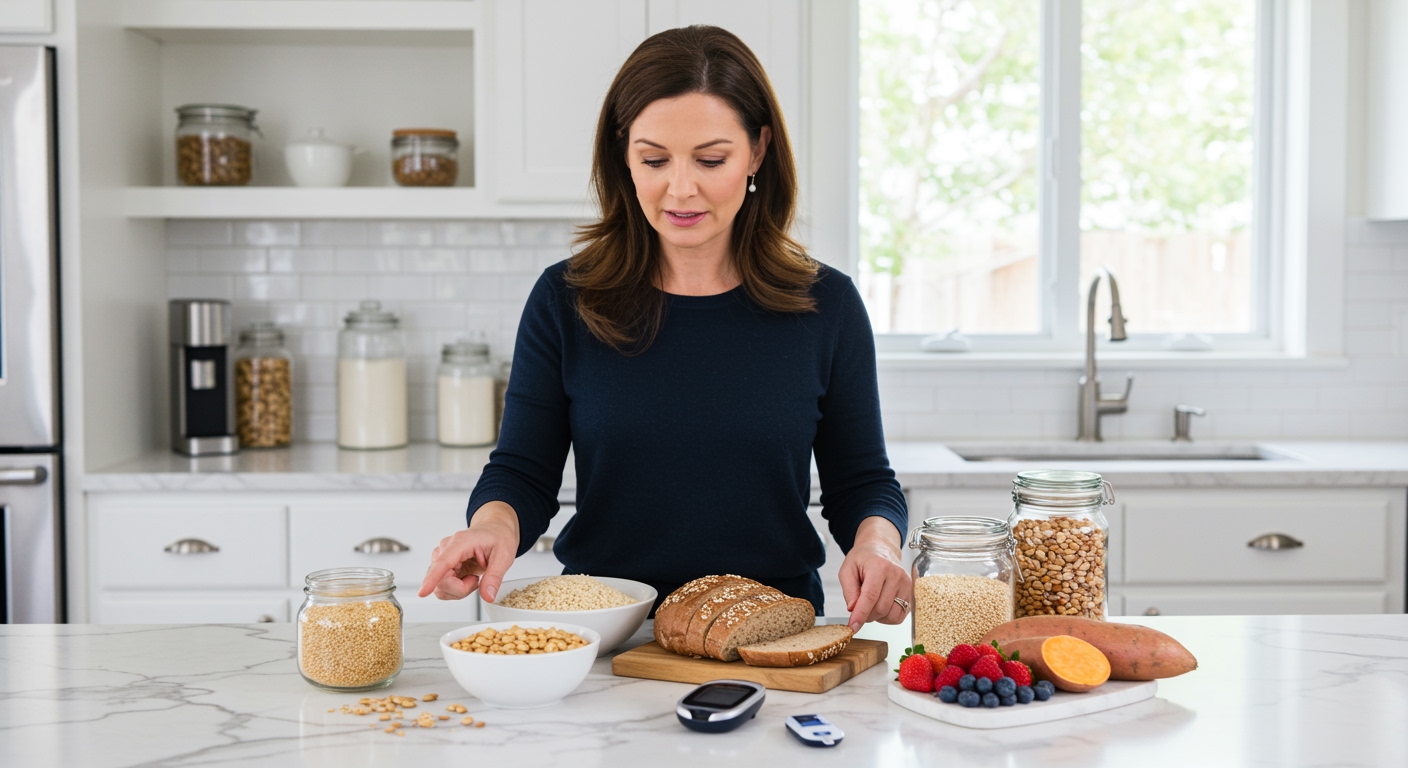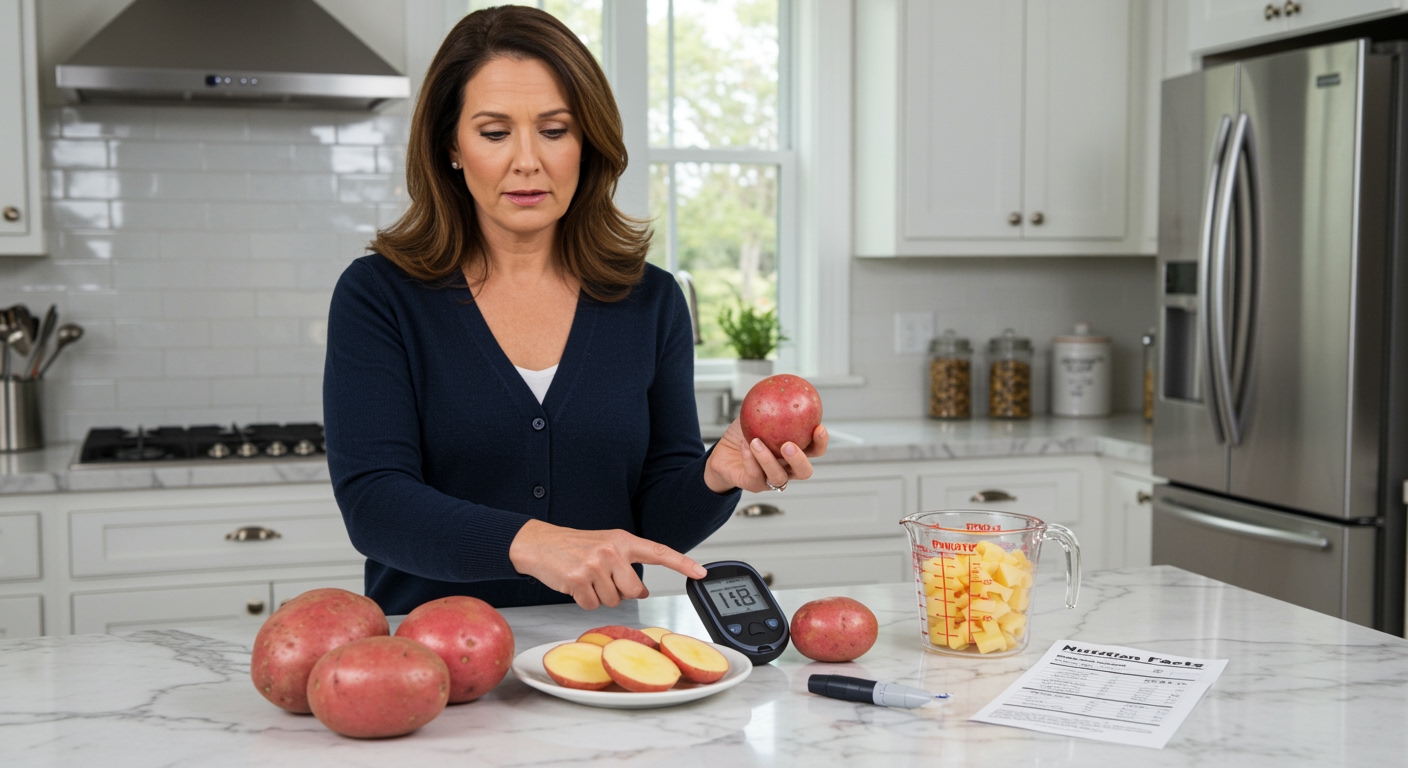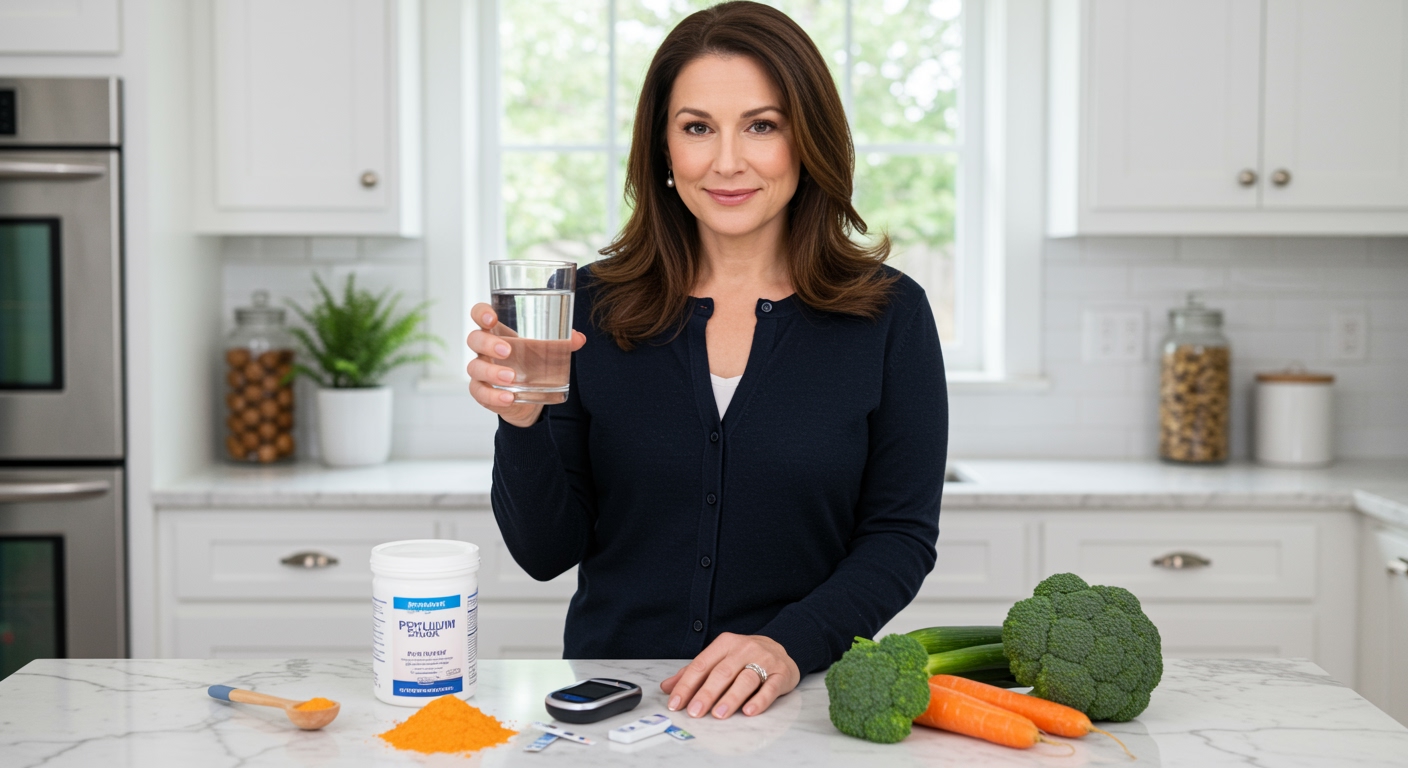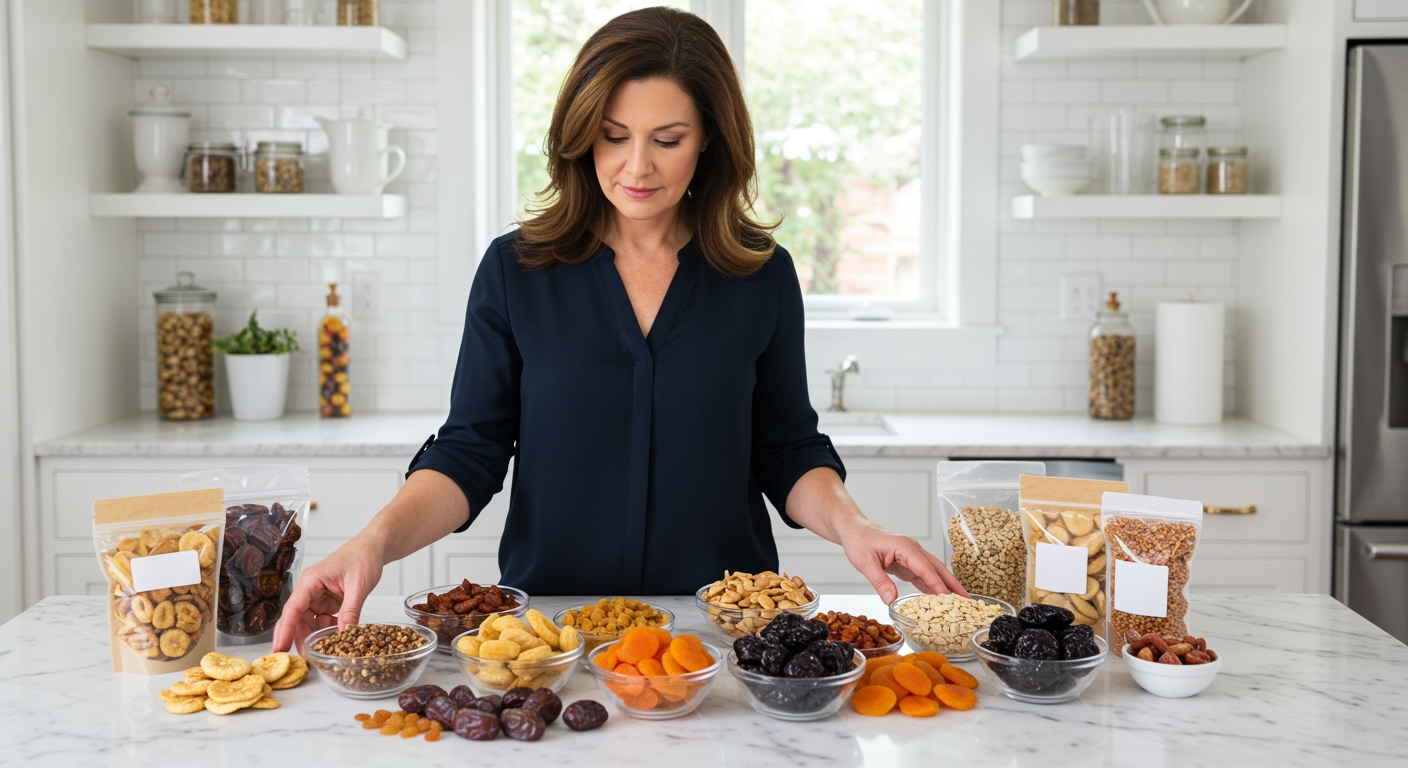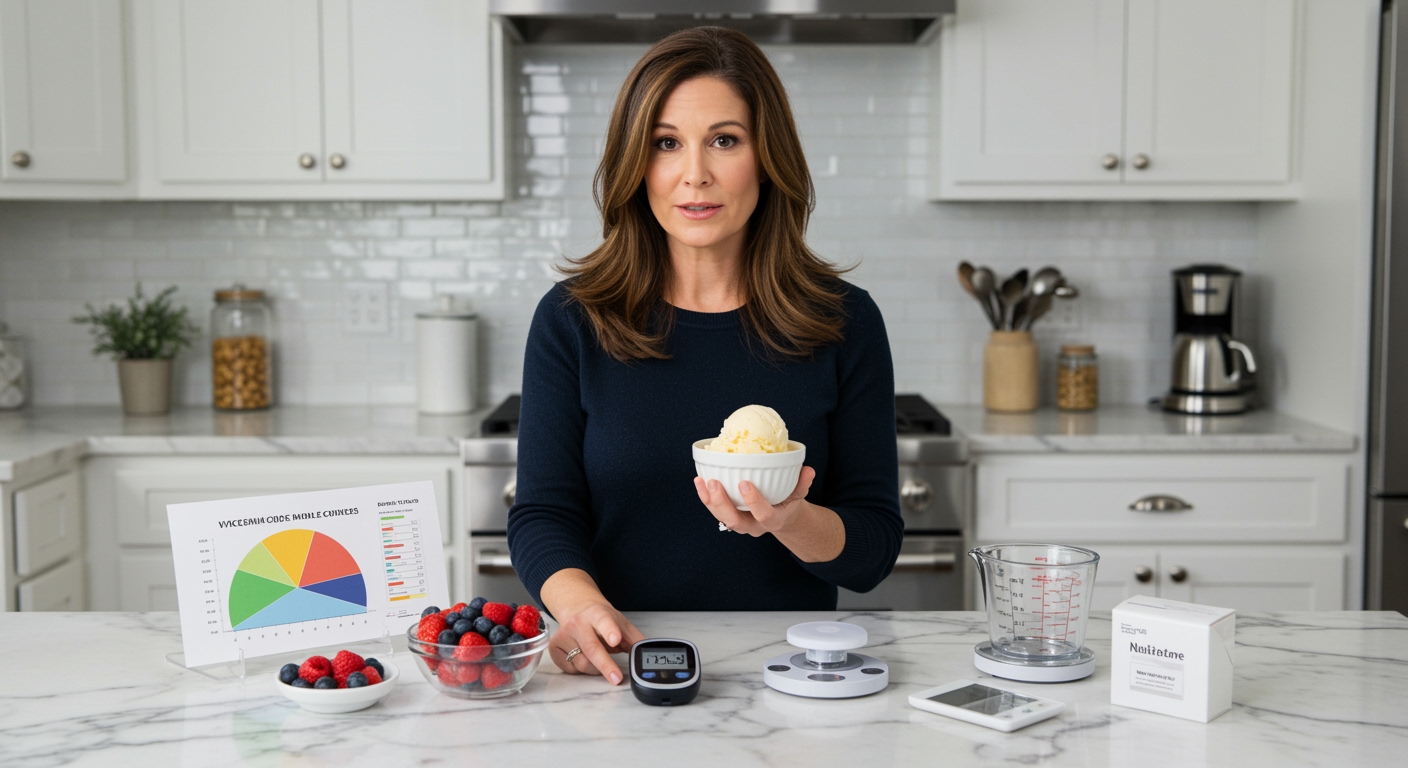✪ Key Takeaway: Carbohydrates can be good for diabetes when you choose complex carbs, control portions, and time them properly with meals.
Introduction
Your doctor just told you that you have diabetes and now you are staring at your plate wondering if that slice of bread will send your blood sugar through the roof.
You might be asking this question because everywhere you look, people are telling you to avoid carbs completely if you have diabetes, but then you hear conflicting advice about needing carbs for energy.
Hi, I am Abdur, your nutrition coach and today I am going to explain exactly how carbohydrates affect diabetes and which ones can actually help you manage your blood sugar better.
What Happens When You Eat Carbs With Diabetes?
When you eat carbohydrates, your digestive system breaks them down into glucose, which enters your bloodstream and raises your blood sugar levels.
In people without diabetes, the pancreas releases insulin immediately to help cells absorb this glucose for energy or storage.
However, if you have diabetes, your body either does not produce enough insulin or cannot use it effectively, causing glucose to build up in your blood instead of entering your cells.
This process explains why your blood sugar spikes after eating carbs, but the type and amount of carbs you eat makes a huge difference in how high and how fast your blood sugar rises.
Simple carbs like white bread and candy cause rapid spikes because they break down quickly, while complex carbs like oats and beans create a slower, more manageable rise in blood sugar.
The key is understanding that not all carbs affect your blood sugar the same way, and completely avoiding them can actually make diabetes management more difficult in the long run.
✪ Fact: Your brain needs about 120 grams of glucose daily to function properly, making some carbohydrate intake essential even with diabetes.
Which Carbs Are Actually Good For Diabetes?
Complex carbohydrates are your best friends when managing diabetes because they contain fiber, which slows down glucose absorption and prevents blood sugar spikes.
Whole grains like brown rice, quinoa, and oats provide steady energy without causing dramatic blood sugar fluctuations that simple carbs create.
Legumes such as lentils, chickpeas, and black beans are particularly beneficial because they combine complex carbs with protein and fiber, creating an even slower glucose release.
Non-starchy vegetables like broccoli, spinach, and bell peppers contain carbohydrates but in such small amounts that they barely affect blood sugar while providing essential nutrients and fiber.
Fruits can be tricky, but berries, apples with skin, and pears are excellent choices because their fiber content helps moderate the natural sugar absorption.
The glycemic index is a useful tool here – foods with a low glycemic index (55 or below) cause slower blood sugar rises and are generally better choices for people with diabetes.
Research shows that people with diabetes who include appropriate amounts of these complex carbs in their diet often have better long-term blood sugar control than those who try to avoid carbs completely.
✪ Pro Tip: Combine carbs with protein or healthy fats to slow glucose absorption and reduce blood sugar spikes.
How Much Carbs Should You Eat With Diabetes?
The amount of carbohydrates you should eat depends on your individual needs, activity level, medications, and how well your blood sugar is controlled.
Most diabetes organizations recommend that carbohydrates make up about 45-65% of your total daily calories, but many people with diabetes do better with amounts on the lower end of this range.
A practical approach is to aim for about 30-45 grams of carbs per meal, which equals roughly 2-3 servings of carbohydrate-containing foods.
Carb counting becomes essential for people taking insulin because it helps them calculate the right insulin dose to match their food intake.
Your healthcare provider might recommend a specific carb target based on your individual situation, but starting with consistent amounts at each meal helps you understand how different foods affect your blood sugar.
Monitoring your blood glucose before and after meals helps you identify which carb amounts and types work best for your body.
Remember that portion control matters just as much as carb type – even healthy complex carbs can raise blood sugar too high if you eat too much at once.
✪ Note: One serving of carbs equals 15 grams, roughly the amount in one slice of bread or half a cup of cooked rice.
When Is The Best Time To Eat Carbs?
Timing your carbohydrate intake can significantly impact how your blood sugar responds throughout the day.
Many people with diabetes find that eating carbs earlier in the day works better because insulin sensitivity tends to be higher in the morning.
Spreading your carb intake evenly across meals prevents large blood sugar spikes and helps maintain more stable glucose levels throughout the day.
Eating carbs before or after physical activity can be beneficial because exercise helps your muscles use glucose more efficiently, reducing blood sugar levels naturally.
Avoiding large amounts of carbs late at night is often recommended because your body processes glucose less efficiently while sleeping, and high bedtime blood sugar can affect sleep quality.
If you take diabetes medications, coordinating your carb intake with your medication schedule helps optimize blood sugar control and prevents dangerous low blood sugar episodes.
The plate method is a simple timing strategy – fill half your plate with non-starchy vegetables, one quarter with lean protein, and one quarter with complex carbs at each meal.
✪ Pro Tip: Eat your vegetables and protein first, then carbs last to slow glucose absorption and reduce blood sugar spikes.
What Carbs Should You Definitely Avoid?
Refined carbohydrates and added sugars are the main culprits that cause dangerous blood sugar spikes and should be limited or avoided completely.
White bread, white rice, and regular pasta are processed foods that have been stripped of their fiber and nutrients, causing rapid glucose absorption.
Sugary drinks like soda, fruit juice, and energy drinks deliver large amounts of simple sugars directly into your bloodstream without any fiber to slow absorption.
Candy, cookies, cakes, and other desserts contain concentrated amounts of sugar that can send blood glucose levels soaring within minutes of consumption.
Processed snack foods like chips, crackers, and pretzels often contain hidden sugars and refined flours that affect blood sugar more than you might expect.
Even seemingly healthy foods like flavored yogurt, granola bars, and breakfast cereals can be loaded with added sugars that make blood sugar management difficult.
Reading ingredient labels becomes crucial because food manufacturers often hide sugars under different names like high fructose corn syrup, dextrose, or maltodextrin.
✪ Fact: One 12-ounce can of regular soda contains about 39 grams of sugar, equivalent to nearly 10 teaspoons of table sugar.
The Bottom Line
Carbohydrates are not the enemy when you have diabetes – the key is choosing the right types, controlling portions, and timing them appropriately with your meals and medications.
Smart carb choices fuel your body while keeping blood sugar stable, but poor carb choices create chaos in your glucose levels.
I would love to hear about your experiences with managing carbs and diabetes – please share your questions, success stories, or challenges in the comments below so we can learn from each other.
References
At NutritionCrown, we use quality and credible sources to ensure our content is accurate and trustworthy. Below are the sources referenced in creating this article:
- PMC: Carbohydrate counting in patients with type 1 diabetes
- Harvard T.H. Chan School of Public Health: Carbohydrates and Blood Sugar
- PMC: Low-carbohydrate diets for patients with type 2 diabetes
- Nature: Effects of carbohydrate restriction on glucose control
